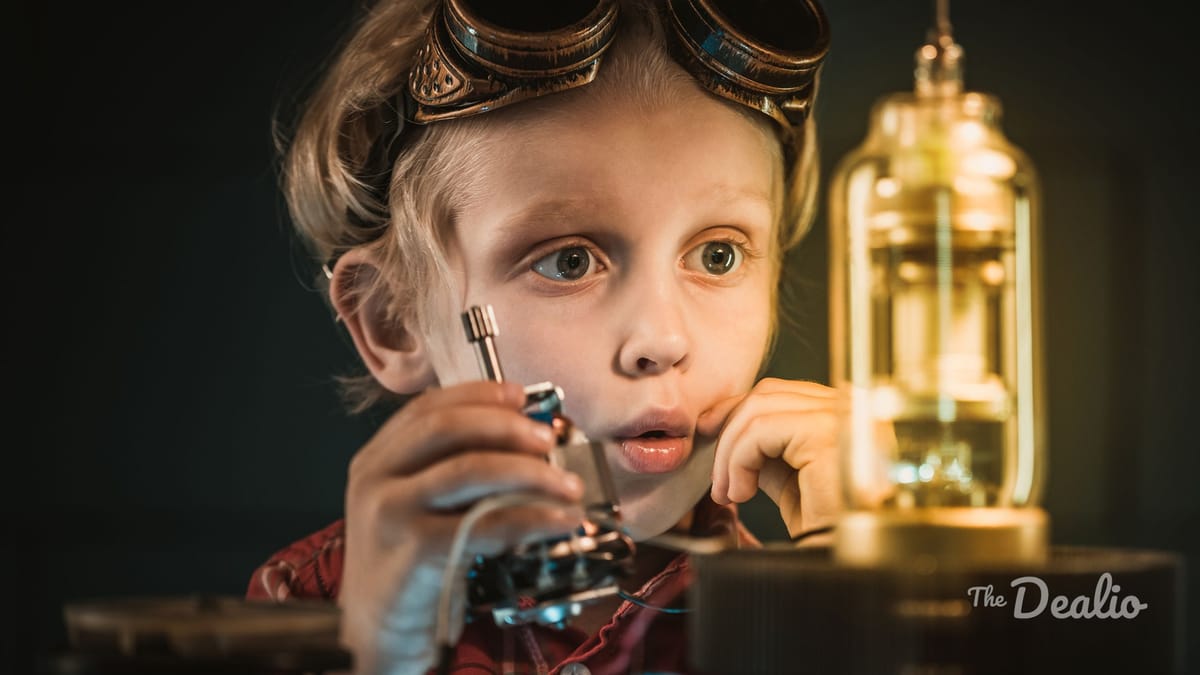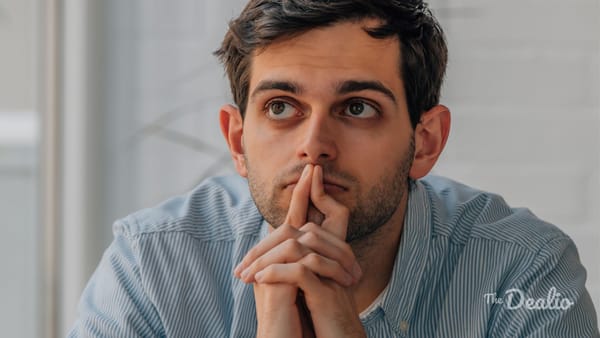Accidental Inventions History: When Mistakes Lead to Marvels

Have you ever wondered if some of the greatest inventions were actually happy accidents? We're taking a look at accidental inventions history and how carelessness and chance encounters have surprisingly shaped our modern world.
The history of accidental inventions is filled with stories of people stumbling upon groundbreaking discoveries. These detailed stories offer a fun and engaging read for everyone.
Unexpected Pathways: A Look into Accidental Inventions History
Sometimes, the path to innovation is not straight. It’s full of unexpected detours, with moments of brilliance when someone stumbles.
Consider Sir Alexander Fleming's discovery of penicillin. He left a Staphylococcus bacteria petri dish out when on vacation. The resulting mold became the world's first antibiotic, saving millions of lives.
The Sticky Story of Super Glue
Super Glue's path is quite interesting. Dr. Harry Coover, working at Eastman Kodak, first encountered the substance while attempting to create clear plastic gun sights during World War II.
The strong adhesive stuck to everything. Years later, Coover realized that the glue didn’t require heat or pressure to bond materials.
Sweet Surprise: Chocolate Chip Cookies
Ruth Graves Wakefield of the Toll House Inn ran out of baker's chocolate. She then used broken pieces of a Nestle semi-sweet chocolate bar. She expected the chocolate bar to melt, but the pieces kept their shape.
She accidentally created chocolate chip cookies. This happy accident led to a boom in popularity, and Wakefield receiving a lifetime supply of chocolate from Nestle.
Potato Chips, Born from a Grumpy Customer
Potato chips show how sometimes a complaint can make a big difference. In 1853, Chef George Crum created fries, but a diner found them too thick.
Crum, annoyed, made them super thin and heavily salted. To everyone's surprise, the customer loved them, and a new snack was born.
Penicillin: A Turning Point
In 1928, Sir Alexander Fleming, left his lab messy before going on vacation. When he returned, he Fleming noticed a mold growing on a staphylococcus culture. This penicillium notatum had stopped the bacteria around it from growing.
It was a messy mistake. A preserved sample of this mold juice sold for about $28,800 in 2017, highlighting its historical value. Sir Alexander Fleming was later awarded the Nobel Prize.
Microwave Oven: Melted Chocolate Bar
The invention of the microwave oven started with a melted chocolate bar. American engineer Percy Spencer, while working at Raytheon, stood near an active magnetron in 1945.
The chocolate bar in his pocket melted. He realized that microwaves emitted could heat food quickly.
This accidental discovery led to the creation of the microwave, now a kitchen staple. Raytheon began selling the first commercial microwave ovens shortly after this discovery.
Post-it Notes and Reusable Ideas
Post-it Notes demonstrate how even seemingly failed ideas can stick. Spencer Silver, a 3M scientist, initially created a weak adhesive while trying to develop a strong adhesive.
Years later, his colleague Art Fry, frustrated with paper bookmarks falling out, had an idea. Nearly ten years later in 1974, Fry used Silver’s “failed” adhesive to create the first Post-it Notes.
Play-Doh: From Cleaner to Child's Play
Play-Doh was originally a wallpaper cleaning product made by Kutol Products. It was designed to remove soot from walls in homes heated by coal.
The decline of coal use threatened the company. Luckily, Joseph McVicker, repurposed it as a children's toy, saving the Rainbow Crafts company and established Rainbow Crafts as a major toy manufacturer changing it to Play-Doh.
Slinky: Down the Stairs
Richard James, a naval engineer working to create springs, aimed to keep ship equipment stable at sea. He accidentally knocked one of the springs off a shelf. He watched how it “walked” down instead of simply falling.
His wife, Betty, saw its potential as a toy. They sold 400 Slinkys within 90 minutes, marking the beginning of a toy craze.
Velcro: Nature’s Tiny Hooks
Swiss engineer George de Mestral noticed how cockleburs stuck to his clothes and his dogâs fur. He examined the burrs under a microscope and found they had tiny hooks that could attach to loops in fabric.
This observation inspired the creation of Velcro. Scientists continue to seek improvements, such as methods to make Velcro quieter, as seen in research from 2021.
X-Rays and Viewing the Invisible
The discovery of X-rays by German physicist Wilhelm Conrad Roentgen dates back to 1895. Roentgen experimented with cathode rays, leading him to detect an unusual glow on a fluorescent screen.
His curiosity led him to place his hand in the path of the rays. He saw the projection of his bones.
Matches: Fire from a Scrape
Before friction matches, creating fire involved various cumbersome methods. British pharmacist John Walker, received credit after his death, for a new way.
He accidentally scraped a coated stick, causing it to ignite. Other early matches contained sulfuric acid in glass vials, which were dangerous.
Implantable Pacemaker: Right Rhythm
Wilson Greatbatch, in 1956, was building a device to record heartbeats. He mistakenly used the wrong resistor in the circuit.
His mistake, using a different resistor, resulted in a pulsing rhythm. That mistake was remarkably similar to that of a heartbeat. This accidental discovery led to the development of the first implantable pacemaker, saving countless lives. Use of these prescribed drugs were common, and issues surrounding the heart.
More Examples of Accidental Inventions
Many other everyday items also originated from accidents. The table below summarizes some additional notable inventions.
| Invention | Inventor (Nationality) | Original Intention |
| Saccharin | Constantin Fahlberg (Russian, at Johns Hopkins University) | Studying coal tar derivatives |
| Dynamite | Alfred Nobel (Swedish) | Experimenting with nitroglycerin as a safer explosive |
| Teflon | Roy J. Plunkett (American) | Attempting to make a better refrigerant. |
| Viagra | Pfizer Scientists (Working in England) | Developed as a treatment for angina and hypertension |
| Corn Flakes | John Harvey Kellogg (American) | Creating a digestible, bland food for patients. |
| Popsicles | Frank Epperson (American) | Accidentally left soda water mixture outside overnight. |
The impact of accidental inventions continues today. In 2020, AstraZeneca and Oxford University found their COVID-19 vaccine had up to 90 percent efficacy, partly due to a dosing error described as "serendipity."
Smoke detectors also illustrate significant accidental value. By the 1970s, over 12 million were sold, and now, about 9 in 10 homes have them.
Final Thoughts
Reflecting on history, numerous stories highlight how errors and oversights have led to incredible advances. Discoveries like the microwave oven and chocolate chip cookies, showcase moments of unexpected opportunity.
Many inventors don't succeed on their first attempt. The stories within accidental inventions history emphasize perseverance and the remarkable outcomes of turning unexpected events into innovations that benefit us today.
Please subscribe to The Dealio and become a Dealio Member to unlock commenting, participate in exclusive polls, and automatically enter to win monthly drawings!

![Time Blocking vs Time Boxing: [Boost Your Productivity In 2025]](/content/images/size/w600/2025/03/Time-Blocking-vs-Time-Boxing.jpg)


